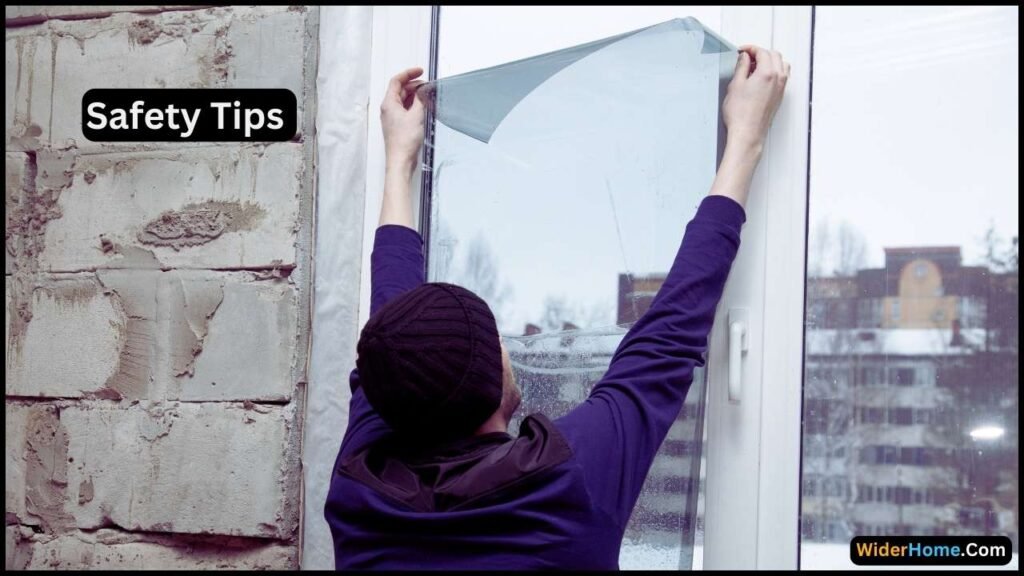How to Clean Storm Windows?

Although cleaning storm windows may appear complicated, it doesn’t have to be! This article can help you learn how to clean storm windows on the outside and inside.
Following these easy recommendations can ensure your windows are clear and in good condition, improving the insulation and view of your home.
This guide will provide you all the information you need to maintain your windows or be ready for any seasonal changes—it will cover all you need to know to accomplish the task effectively and safely.
Preparation to Clean Storm Windows
Before you start cleaning your storm windows, getting ready is essential. Here’s what you need to do:
Gather Necessary Supplies
You’ll need a few supplies to make the job easier:
- Cleaning Solution: You can use a mix of vinegar and water or buy a window cleaner from the store.
- Microfiber cloth or Soft Sponges will help you clean without scratching the glass.
- Squeegee: This tool will help remove water from the Glass for a streak-free finish.
- Bucket: You will need this to mix your cleaning solution.
- Ladder (if required for high windows): If your windows are too high to reach, a ladder will help you safely climb them.
- Rubber Gloves: Wear these to protect your hands from harsh cleaning chemicals.
Assess Window Condition
Before you start cleaning, check your windows:
- Check for Broken Seals or Glass: Ensure everything is still in good condition. If you see any cracks or broken parts, you might need repairs.
- Identify the Specific Type of Storm Window (Interior or Exterior): Know whether your storm windows are inside your house (interior) or outside (exterior), as this will affect how you clean them.
How to Remove Storm Windows?

Removing storm windows is a straightforward process that helps maintain your home throughout the changing seasons. Begin by gathering your tools, such as a screwdriver or a suitable tool for your window type.
If you’re dealing with exterior storm windows, look for any screws or clips holding the window in place and gently unscrew or unclip them. Be cautious as you lift the window away from the frame; if it feels stuck, check for additional fasteners before proceeding.
For interior storm windows, slide or pull the panels out of their frames, avoiding forcing them, which could cause damage. Once removed, store the windows safely until they are needed again.
This simple task can enhance your home’s efficiency and appearance, making cleaning and maintenance much more accessible.
Cleaning Process
Now that your storm windows are removed and ready for cleaning, follow these steps to ensure they sparkle:
Dusting and Pre-Cleaning
Remove Dust and Debris: Clean both sides of the Glass with a dry cloth to eliminate any loose dust and debris. This step is crucial to avoid scratching the Glass during the washing process.
Vacuum Frames and Sills: If dirt or debris has accumulated in the frames and sills, vacuum them to remove them, ensuring all areas are clean before applying any liquids.
Washing the Glass
Prepare Cleaning Solution: Mix your chosen cleaning solution—a vinegar-water mix or a commercial cleaner—in a bucket.
Apply the Solution: Dip a cloth or sponge into the solution and apply it generously to the Glass, covering all areas.
Clean in a Circular Motion: Gently scrub the Glass in a circular motion. This technique helps avoid streaks and ensures an even clean.
Rinsing
Wipe Glass with a Damp Cloth: After washing, take a damp cloth and wipe the Glass to remove any remaining cleaning solution.
Use a Squeegee for a Streak-Free Finish: Finally, run the squeegee from the top to the bottom of the Glass to remove excess water, wiping the blade with a clean cloth between strokes for the best results.
Cleaning Windows Frames and Sills

Cleaning the frames and sills of your storm windows is a simple and essential step. Here’s how to do it quickly:
Dust Off Debris
Use a Dry Cloth: Start by taking a dry cloth and gently wiping the frames and sills to remove dust or loose dirt. This helps ensure the surface is clean before you use cleaning solutions.
Clean with Solution
Apply the Cleaning Solution: Take your prepared cleaning solution and use a soft cloth or sponge. Lightly dip it into the solution and then wipe the frames and sills. Be sure to cover all areas, especially the corners where dirt can hide.
For Tough Dirt: If you notice any stubborn dirt, use a mild abrasive pad. Just be gentle to avoid scratching the surface.
Final Wipe
Wipe with a Damp Cloth: Once you’ve cleaned everything, take a damp cloth and wipe the frames and sills to remove any leftover cleaner.
Dry Thoroughly: Finish using a dry cloth to ensure everything is dry and streaks-free.
Reattaching Storm Windows
Once your storm windows are clean and dry, it’s time to reattach them carefully. Please start with the exterior storm windows by aligning them with the hinges or clips from which they were removed.
Ensure they fit securely into place without forcing them, as this could damage the Glass or the framework. Slide or place the removable panels back into their frames for interior windows, ensuring they sit snugly and evenly.
Once everything is secured, double-check that the seals are tight to prevent drafts or water leaks. Taking time during this process will ensure they function effectively and maintain the clarity achieved during cleaning.
Safety Precautions for Window Cleaning

When cleaning your storm windows, it’s essential to stay safe. Here are some simple tips to follow:
- Wear Protective Gear: Always wear safety glasses to protect your eyes from flying debris. Wear rubber gloves to keep your hands safe when using strong cleaning chemicals.
- Use a Stable Ladder: If you need a ladder to reach high windows, ensure it’s strong and set up on a flat surface. Always have someone with you to help if necessary.
- Check Weather Conditions: Avoid cleaning windows on windy or rainy days, as this can make them more dangerous. Clear, calm days are best for this job.
- Be Aware of Your Surroundings: Look for obstacles or electrical wires around your cleaning area. Move anything that might get in your way to create a safe working space.
These safety tips will help you clean your storm windows without any accidents.
Maintenance Recommendations
To keep your storm windows in great shape and working well, follow these simple maintenance tips:
- Regular Cleaning: Try to clean your storm windows at least twice a year. This helps prevent dirt build-up and keeps them looking nice.
- Inspect for Damage: Check the windows regularly for any signs of damage, like cracks in the Glass or problems with the seals. If you see something wrong, fix it immediately to avoid more significant issues.
- Lubricate Moving Parts: If your storm windows have moving parts, such as hinges or clips, apply lubricant to keep everything working smoothly.
- Store Properly: If you remove your storm windows during warmer months, store them in a safe, dry place to protect them from scratches or breaks.
By following these easy tips, you can ensure your storm windows last longer and stay efficient!
FAQs
How often should I clean my storm windows?
Cleaning your storm windows is advised at least twice a year, in the spring and the fall. Regular care keeps your windows looking their best and prevents dirt and grime build-up.
What materials do I need to clean storm windows effectively?
To clean storm windows, assemble the following tools: a bucket, a sponge or cloth, a squeegee, a light cleaning solution (such as dish soap combined with water), and a dry cloth for drying the sills and frames. Safety gear, including gloves and goggles, is also suggested.
Can I use vinegar or ammonia on my storm windows?
Ammonia and vinegar work well for cleaning, but you must dilute them with water first. Use a spray bottle to combine equal parts water and vinegar or ammonia, then mist the Glass. Make sure you rinse well to avoid stains.
What should I do if I see condensation between the glass panes?
The presence of condensation between the panes typically signifies a damaged seal that is letting moisture in. Cleaning the storm window won’t fix the problem; you may need to replace or seal it properly.
Is it safe to clean storm windows on my own?
You can clean storm windows safely on your own. Still, following the safety tips outlined earlier is crucial, such as using a stable ladder, wearing protective gear, and checking weather conditions. If you need more clarification or are uncomfortable, consider hiring a professional.
How do you clean storm window tracks?
A quick and easy way to maintain your windows working correctly is to clean the storm window track. Use a little brush or a hoover to remove any dirt or debris. When cleaning the tracks, get into the corners and use a towel or sponge dipped in warm, soapy water.
A gentle scrub brush can help remove tough dirt. To avoid moisture buildup, suitably dry and rinse with clean water. Routinely cleaning the tracks can also make opening and closing your storm windows easier.
How to clean a storm door window?
A quick and easy cleaning can improve a storm door window’s visual appeal. Assemble your cleaning tools, such as a squeegee, a sponge, and a pail of warm, soapy water.
Start by wetting the window with soapy water using the sponge. Next, give it a light scrub to remove any residue. Rinse the window with fresh water to ensure there is no soap residue left.
Lastly, the squeegee removes extra water by drawing it down from the top. Wipe the blade with a cloth after each pass to prevent streaks. Your storm door window will be immaculate after you use a dry towel to clean the frame and edges.
Conclusion
To sum up, storm window maintenance and repair are critical to maintaining your house’s comfort and energy efficiency. You can ensure that your storm windows properly fulfill their purpose by giving them regular cleanings, inspecting them for damage, and following safety precautions during installation and removal. These straightforward procedures will improve your property’s overall look and extend its longevity.
